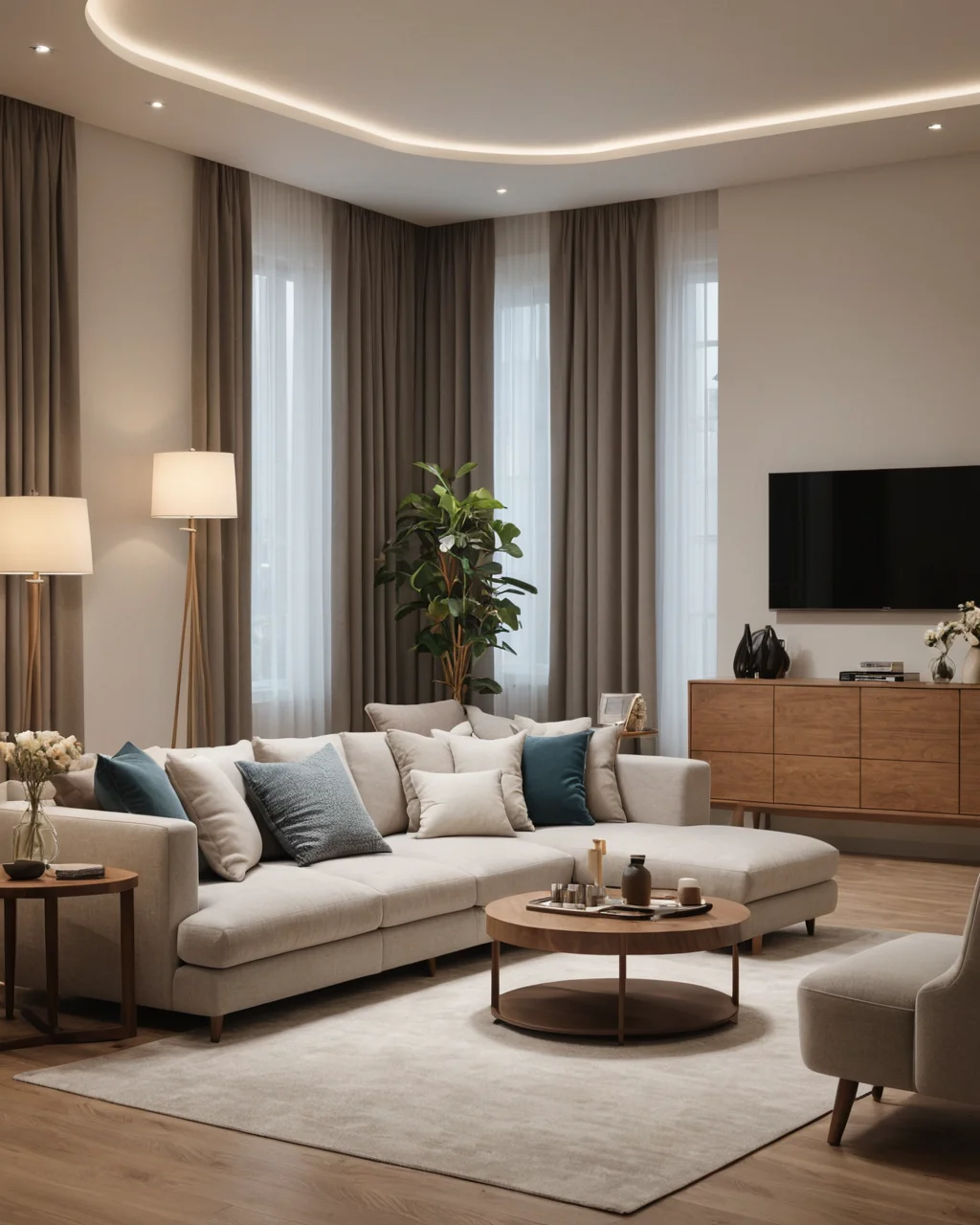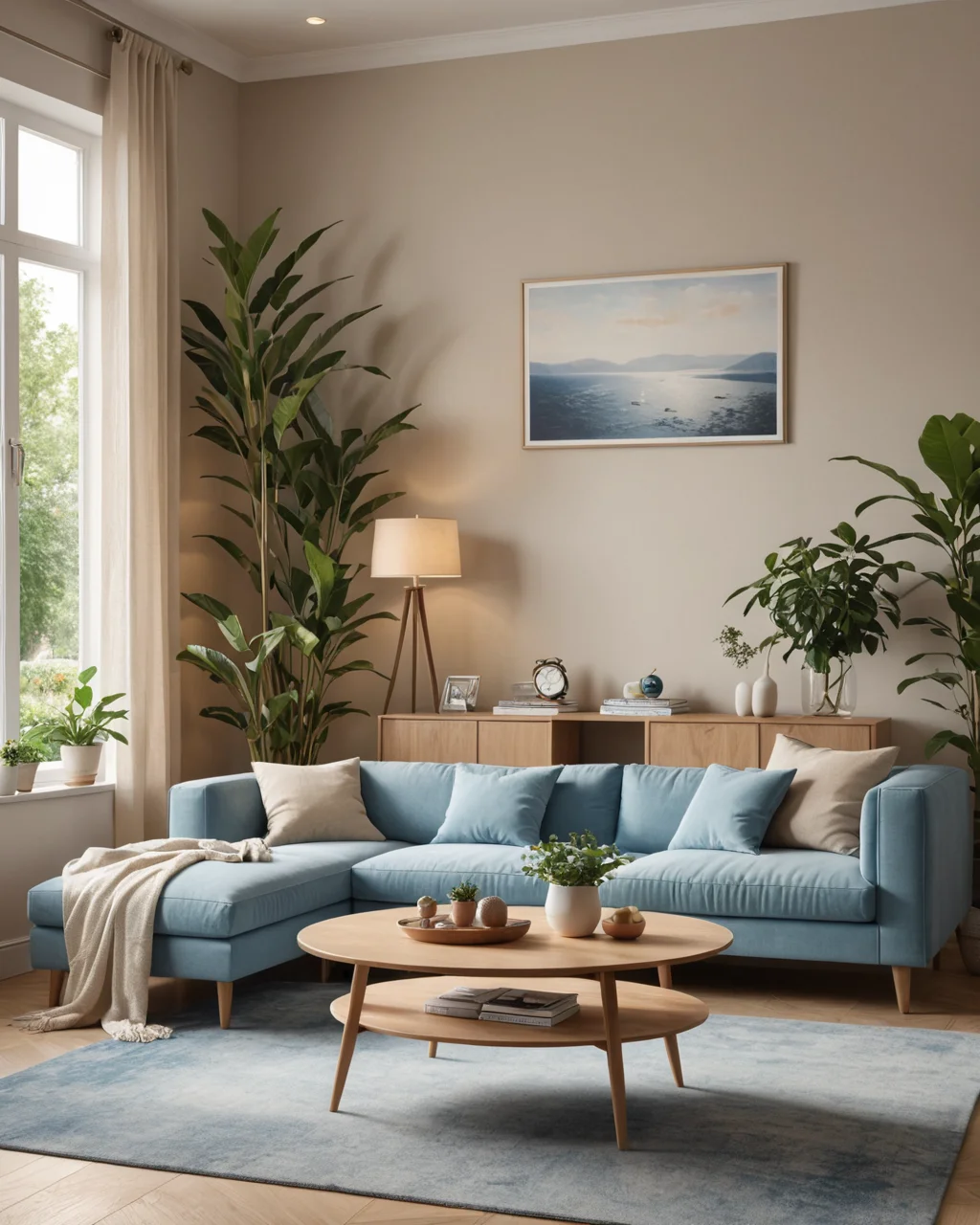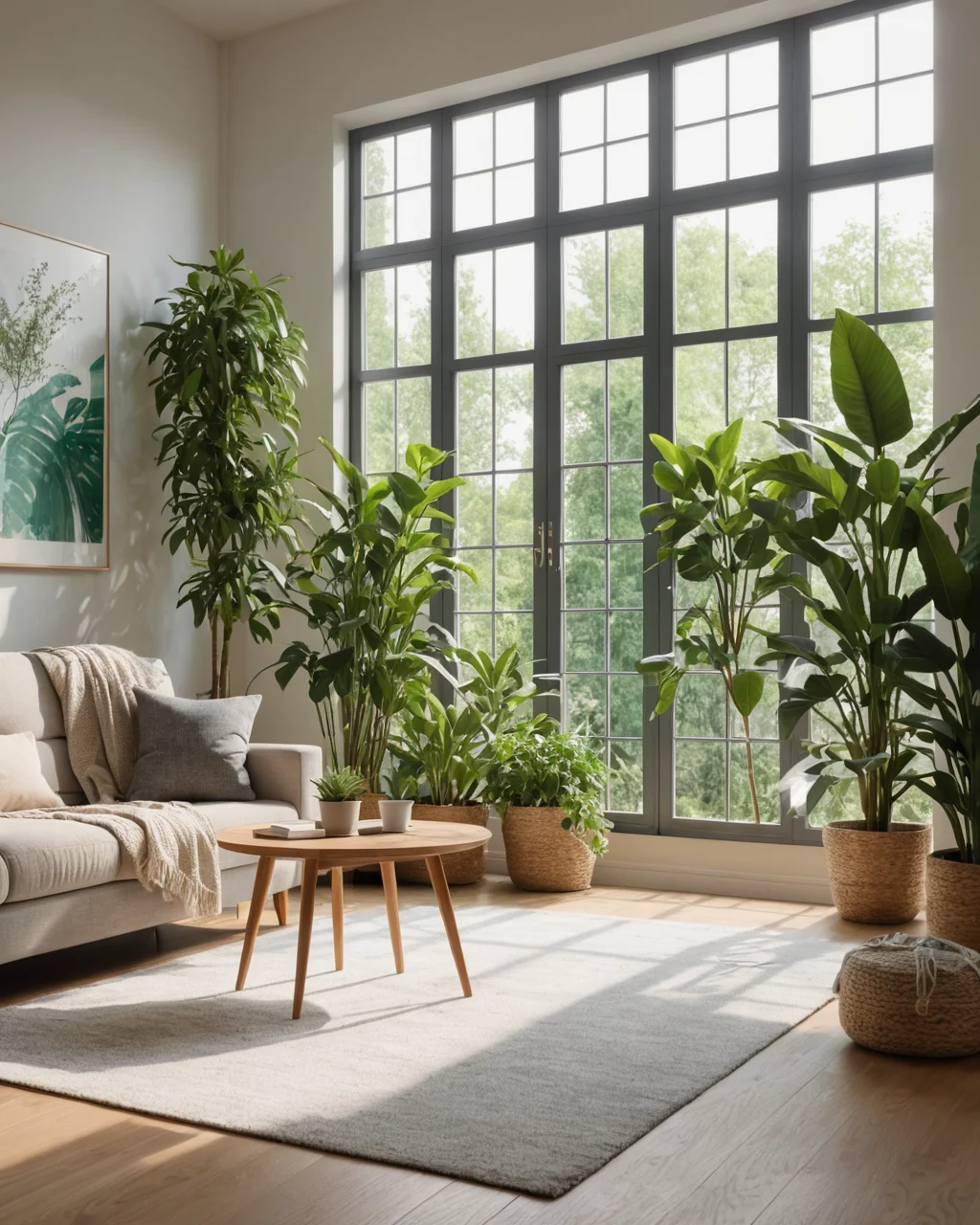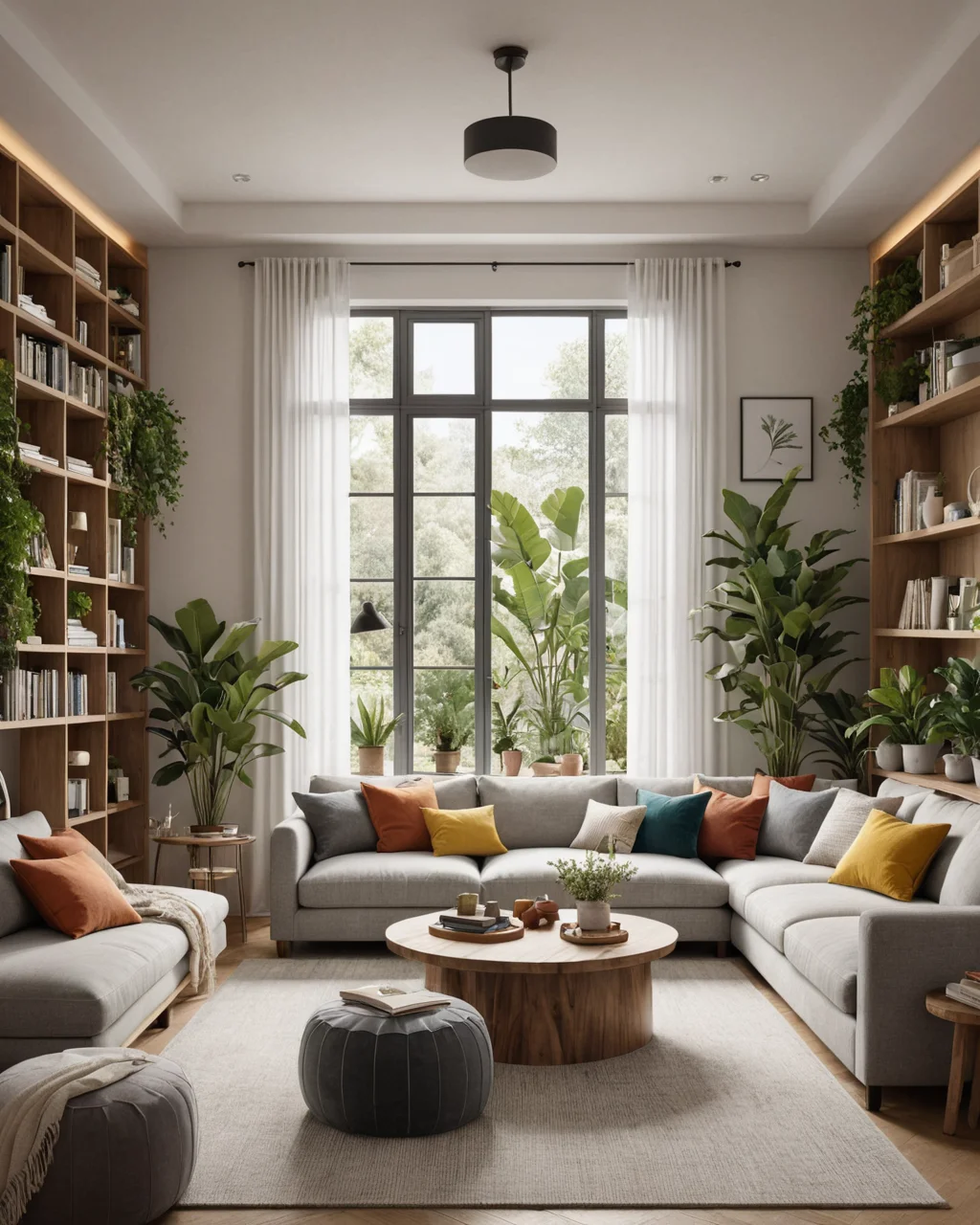The living room is the heart of any home, a place where family members gather to spend time together, communicate, and relax. But how can you create an atmosphere that fosters family happiness? Feng Shui, the ancient Chinese art of harmonizing space, offers many recommendations that will not only improve mood but also strengthen relationships between loved ones. Let’s break down the key aspects of Feng Shui for the living room so that every moment spent in this space brings joy and comfort.
The Energy of Space: The Foundation of Harmony
Every corner of our home is permeated with energy, known as qi. In Feng Shui, qi is considered the source of life, and its harmonious flow contributes to well-being and happiness. In the living room, where families communicate and relax, it is especially important to create conditions for the free movement of this energy. For example, to allow qi to circulate freely, it is necessary to avoid unnecessary obstacles, such as bulky items or clutter. Ensure that pathways in the living room are clear and the space looks light and uninhibited.
The shape and color of furniture also play a significant role in creating a favorable atmosphere. Rounded shapes promote softness and relaxation, while sharp corners can cause discomfort and tension. When choosing furniture, pay attention to its color: warm, muted shades like beige, olive, or soft pink create coziness and harmony, while overly bright colors can cause excessive activity and irritability.
Furniture as an Element of Well-being

The correct choice and arrangement of furniture in the living room is a key moment for harmonizing the space. Furniture should be placed in a way that ensures a comfortable and relaxed environment. For example, sofas and armchairs should be positioned so that all family members can see each other while communicating. This promotes openness and strengthens bonds between loved ones.
Avoid sharp corners in furniture placement. They can negatively affect the atmosphere in the home, creating discomfort and even conflicts between family members. Instead, try to use furniture with soft lines and shapes. If sharp corners are unavoidable, you can use special protective covers or cover them with soft fabrics to soften their impact.
Color Palette for Happiness

Colors in the interior are a powerful tool for creating the desired mood and atmosphere. Each color has its own meaning and can affect emotional state. For example, warm shades of yellow and orange lift spirits and promote communication, while cool blue and green tones create a calming environment.
Ideal color combinations for creating coziness in the living room can include pastel tones such as soft blue, mint, or cream, which complement each other beautifully. It is important to remember that the color palette should be harmonious and not overloaded with bright accents that can be distracting and irritating.
Light and Air: Key Elements

Natural light is one of the most important aspects of Feng Shui. It not only fills the space with energy but also creates a sense of spaciousness and comfort. Think about how to maximize light from windows: avoid heavy curtains and choose light, translucent fabrics that allow sunlight to penetrate the room.
In addition, ventilation and fresh air are important. Regular airing helps maintain an atmosphere of cleanliness and health, which also contributes to harmony in the family. Consider installing ventilation systems that will ensure a constant supply of fresh air.
Decor That Brings Joy

Decor in the living room is not only a way to give the space individuality but also an important element of Feng Shui. The use of symbolism and lucky items can significantly improve the atmosphere. For example, images with symbols of happiness, such as koi carp or bamboo, can be an excellent addition to your interior.
When hanging pictures and photographs, it is important to remember that they should be aimed at creating positive emotions. Hang them so that family members feel happy when looking at them. Images of bright moments of shared life or travels will serve as a constant reminder of joy and love.
Comfort Zones: Where to Relax and Communicate

Creating cozy corners in the living room is an important aspect that allows family members to spend time together, as well as have the opportunity to retreat. Dividing the space into comfort zones helps everyone find their niche. A comfortable sofa can be a place for watching movies together, and an armchair in the corner can be an ideal reading nook.
Zoning can be achieved using furniture, rugs, or even plants. For example, using a soft rug can visually separate the relaxation area from the communication zone. Think about how each zone can contribute to both active communication and solitude.
Nature in the Interior: Connecting with the Outside World

Plants in the interior are not only decoration but also an important element of Feng Shui, contributing to the creation of a harmonious atmosphere. They help purify the air, fill the space with life and energy. When choosing plants for the living room, give preference to those considered lucky from a Feng Shui perspective, such as dracaena or money tree.
When placing green elements, consider that they should be visible and easily accessible. This will create a sense of closeness to nature and help maintain a positive mood. It is also worth considering that different plants can affect energy: some promote active communication, while others help to relax and restore strength.
